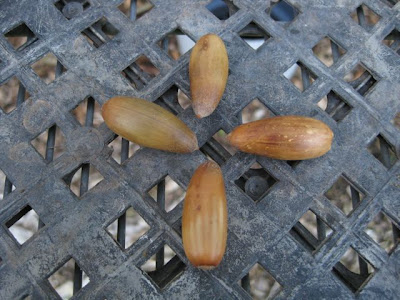The report reinforces much of what you already know about snails and slugs, as well as how to control them. But there are some interesting twists, including:
Copper Sulfate repels snails and slugs.
"Instead of copper bands, Bordeaux mixture (a copper sulfate and hydrated lime mixture) or copper sulfate alone brushed onto trunks will repel snails. One treatment should last about a year. Adding a commercial spreader or white latex paint can help the Bordeaux mixture remain effective for two seasons."
There are snail and slug-resistant plants!
"On the other hand, many plants resist snail and slug damage including begonias, California poppy, fuchias, geraniums, impatiens, lantana, nasturtiums, and purple robe cup flower as well as many plants with stiff leaves and highly scented foliage such as lavender, rosemary, and sage. Most ornamental, woody plants, and ornamental grasses also aren’t seriously affected. If you design your landscape using snail and slug resistant plants, you are likely to have very limited damage."
And these are the plants they enjoy the most:
"Because they prefer succulent foliage or flowers, they primarily are pests of seedlings and herbaceous plants, but they also are serious pests of ripening fruits that are close to the ground such as strawberries, artichokes, and tomatoes. They also will feed on foliage and fruit of some trees; citrus are especially susceptible to damage. Look for the silvery mucous trails to confirm slugs or snails caused the damage and not earwigs, caterpillars, or other chewing insects."
"Some plants these pests will seriously damage include basil, beans, cabbage, dahlia, delphinium, hosta, lettuce, marigolds, strawberries, and many other vegetable plants."
Another reason to turn off the sprinklers and turn on to drip:
"Switching from sprinkler irrigation to drip irrigation will reduce humidity and moist surfaces, making the habitat less favorable for these pests"
Shopping for snail bait? The advice remains the same: Choose iron phosphate over metaldehyde.
"Baits containing the active ingredient metaldehyde are most common; however, metaldehyde baits are particularly poisonous to dogs and cats, and the pelleted form is especially attractive to dogs. Don’t use metaldehyde snail baits where children and pets could encounter them. Avoid getting metaldehyde bait on plants, especially vegetables. Some metaldehyde products are formulated with carbaryl, partly to increase the spectrum of pests controlled such as soil- and debris-dwelling insects, spiders, and sowbugs. However, carbaryl is toxic to earthworms and soil-inhabiting beneficial insects such as ground beetles, so it is better to avoid using snail baits containing carbaryl."
"Iron phosphate baits—available under many trade names including Sluggo and Escar-Go—have the advantage of being safe for use around children, domestic animals, birds, fish, and other wildlife, making them a good choice for an integrated pest management program in your garden. Ingesting even small amounts of the bait will cause snails and slugs to stop feeding, although it can take several days for the snails to die. You can scatter the bait on lawns or on the soil around any vegetable, ornamental, or fruit tree that needs protection. Iron phosphate baits can be more effective against snails than slugs overall and more effective than metaldehyde during periods of higher humidity. Snails and slugs tend to hide before they die, so you won’t see scattered empty shells or dead snails and slugs as you would if treating them with metaldehyde."
"The timing of any baiting is critical; baiting is less effective during very hot, very dry, or cold times of the year, because snails and slugs are less active during these periods. Irrigate before applying a bait to promote snail activity, and apply the bait in the late afternoon or evening. Sprinkle bait around sprinklers, close to walls and fences, or in other moist and protected locations, or scatter it along areas that snails and slugs cross to get from sheltered areas to the garden."













































